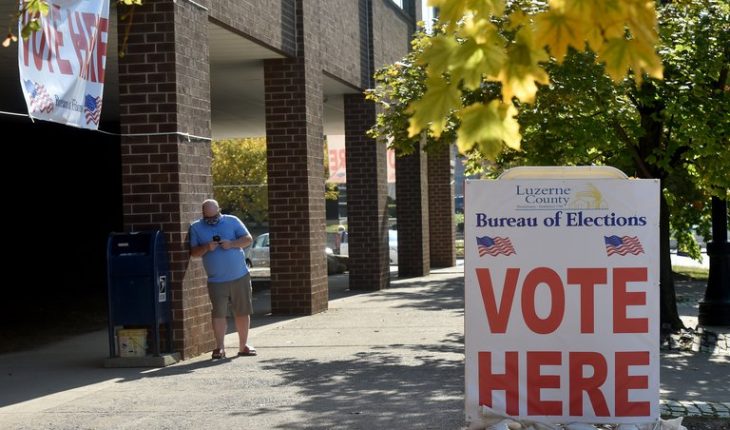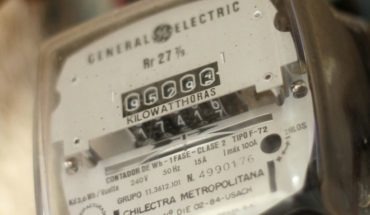As of Friday night, 86.8 million people had already voted in the U.S. presidential election. This equates to 63% of the total ballots presented in the elections of 2016.La most election experts believe that between 150 and 160 million people will participate in these elections, which would mean that the equator of the vote has been exceeded. In Texas, more votes have already been cast than there were four years ago. The 9 million Texans they paid make up more than half of all registered voters in the state. The vast majority of those votes were in person. Democrats have a significant advantage over the Republican Party in the early vote – 47% vs. 33%- according to analysis by the AP news agency with data from political consultancy L2. This doesn’t mean Democrats are going to win, but it does increase the pressure on Republicans to gain a similar or greater advantage on November 3. Arizona, Florida, Georgia, Hawaii, Montana, Nevada, New Mexico, North Carolina, Oregon, Tennessee and Washington State reported that at least 80% of the total 2016 vote in those states has been delivered. While early voting numbers are reaching record levels, there are still millions of ballots in the mail that have not yet been returned. Analysis of the Elections Project found 35 million ballots by mail pending through Friday.
The big question about participation in all elections is: which party is convincing new voters? The data shows that Democrats would be winning in that field, but not necessarily as dramatically as some of the big global data might suggest.
According to the AP analysis, on more than 1 in 4 ballots submitted at the moment, 27%, they were new or rare voters, people who have either never voted before or who have voted less than half the time they were able to participate. It seems like a big figure, but it’s not much higher than it has been in recent years. Democratic data firm Catalist found that in 2016 approximately a quarter of the electorate had not voted in previous presidential ones.
However, it could keep going up as newbies and non-regulars tend to vote closer to polling day or the day itself. And even small changes can make a difference in states where the battle between Trump and aspiring Democrat Joe Biden is tighter.
An increase in that sense seems to be good news for Democrats. 43% of voters in this category are registered as Democrats, compared to a quarter who identify as Republicans. The remaining third appear as independents or a minority party, a group that tends to favor Democrats.
Voters gather in the region known as the Belt of the Sun, especially in states like Florida, North Carolina, and especially in Texas, which Democrats hope to win by mobilizing a large portion of the electorate that abstains in most elections.
“Democrats are already issuing their electorate,” said Tom Bonier of Democratic data firm TargetSmart. “This would seem favorable to Biden, but we have to take into account the warning we’ve heard a million times before: we don’t know how many people will vote on Election Day.”
Biden’s fate could be linked to strong participation of African-American voters in disputed states. At the moment, about 9% of advance ballots are From African-American, almost on par with 10% in 2016, according to a voter estimate made by Pew Research then.
African-American voters are keeping their quota in several disputed areas. In North Carolina they account for 21% in both early voting and registrations, while in Georgia they make up 30% forward vote and 32% of registered voters.
A slight decline in the high turnout of African-Americans in 2008 and 2012 impacted the democrats’ defeat four years later, and training and their supporters are watching closely at what is happening this time.
At the moment, the data is ambiguous. The number of older African-Americans who voted has risen. The age of 65 or older are already one of the most reliable demographic groups in the election, but according to TargetSmart data, they have improved their participation in six key states: Arizona, Florida, Georgia, Nevada, North Carolina and Texas.
At the same time, according to the International Union of Service Employees (SEIU), younger African-American voters, who(e) are less reliable, they have already cast more votes than in 2016. This is an indication of the increased commitment of an electorate sector that fell in 2016.
According to the union, African-American voters are recovering from the effects of the coronavirus pandemic and the collapse of the economy, which hit their community especially, in addition to the mobilizations against racism in the country. This motivates them to overcome the persistent obstacles to voting, said Mary Kay Henry, SEIU’s international president.
The AP analysis showed that, as of Friday, 11.3% of the early vote had been cast by voters between the age of 18 and 29. This represents a slight increase from this point in the election race of 4 years ago, when children under 30 would have presented 9.6% of the ballots, according to TargetSmart.
And in the disputed states of Florida, Georgia, and North Carolina, 30% or more of the youth have already participated, according to AP data.
This is, again, a good indication for Democrats, albeit very preliminary. Young people tend toward the Democratic Party, and when Democrats mobilize to vote, it’s not unusual for their numbers to be higher.
The young electorate broke records in 2018, with a 36% share of its demographic, according to the U.S. census. This helped Democrats regain control of the House of Representatives.
There was some concern that the pandemic would cause a sharp decline in the registrations of people in their 18s and 19s, who will be able to vote for the first time. However, the youth register for voting is higher in almost every state this time than in 2016, according to Tufts University’s Center for Information Research and Civic Learning and Engagement. This reflects both population growth and rising registrations for the mid-term elections of 2018.
With information from AP and Infobae





